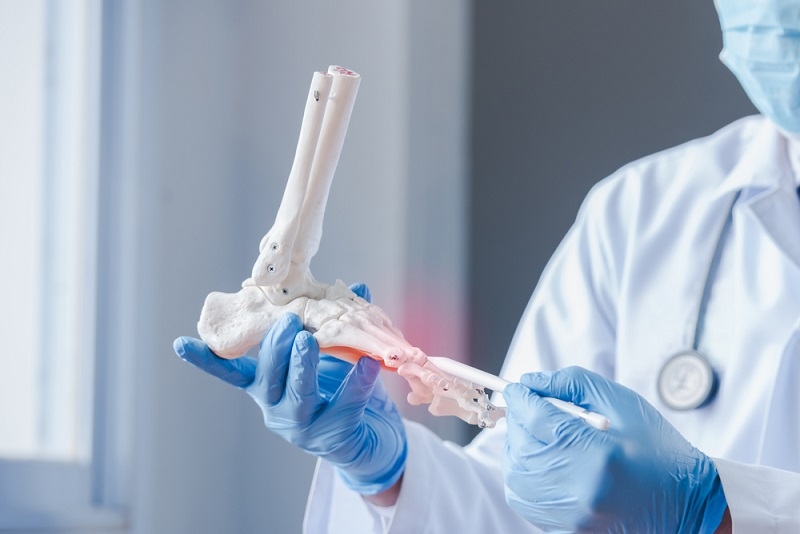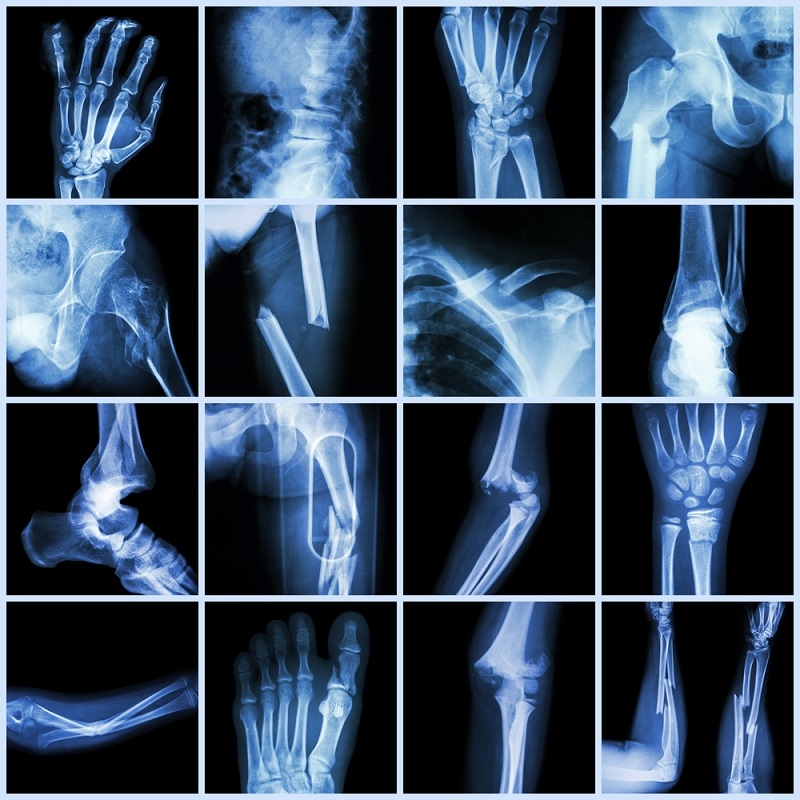What are Bone Fractures? Learn All About The Condition

The human body is natures most complex design, with numerous functions and infinite applications. The movement of each part of our bodies works because of our skeletal system. The bones provide the framework that supports our body and allows us to move. However, sometimes accidents happen that result in bone fractures, that cause pain, discomfort, and restriction to movements. Lets understand the potential difficulties of bone fractures and how to be safe from them:
What is a Bone Fracture?
Simply explained, bone fractures are breaking or cracking of bones that can be caused by imprudent force or trauma. Each bone in our body has its unique properties and functions, which can be interrupted by bone fractures. It could be a plain fingerbone fracture or a complicated femur fracture. The severity of bone fractures determines how well the bone will be working once it is fixed. It could range from a minor hairline to a bone crush that never can be brought back to normal.
Fractures can be classified based on their location and pattern. Location-based classifications include long bone fractures, flat bone fractures, and small bone fractures. Pattern-based classifications include transverse bone fractures, oblique bone fractures, comminuted bone fractures, greenstick bone fractures, spiral bone fractures, compression bone fractures, and stress bone fractures.
Different Types of Bone Fractures:

1. Transverse Fracture:
This pattern-based bone fracture occurs when the break is perpendicular to the long axis of the bone, resulting in two bone segments. Transverse bone fractures are direct blows or impacts to the bone.
2. Oblique Fracture:
When the pattern of a bone fracture is diagnosed to be at an angle across the bone, creating a diagonal line, is an oblique fracture. This type of fracture is commonly seen in sports injuries caused by a twisting or rotational force applied to the bone.
3. Comminuted Fracture:
Severe bone fractures that involve the bone breaking into several fragments, often due to stronger impacts are comminuted fractures. These fractures can be more challenging to treat and may require surgical intervention.
4. Greenstick Fracture:
Greenstick bone fractures, often found in children are incomplete fractures where the structure of the bone is bent but isnt broken completely. This occurs because of the higher flexibility of children than those of adults.
5. Spiral Fracture:
Another one among bone fractures is a result of rotating force being applied to the bone, resulting in a twisted break. Spiral fractures occur due to sports-related injuries or falls.
6. Compression Fracture:
The name suggests the bone fractures that happen due to the collapse of bone by compression forces. Commonly known to occur in the spine, these fractures are usually caused by a condition characterized by weak and brittle bones called osteoporosis.
7. Stress Fracture:
When continuous stress is applied that strains a particular bone, it leads to stress bone fractures. Often seen in athletes or individuals engaged in repetitive activities, these bone fractures are typically caused by overuse. They commonly occur in weight-bearing bones like the tibia or metatarsals.
Diagnosis of Fractures by Their Patterns:

Diagnoses of bone fractures are highly important to get to the root cause of the fracture and the correct treatment for it. Healthcare professionals employ various methods for diagnosis:
1. X-rays:
X-rays are the machines that capture images of bones helping in tracking the exact location of bone fractures. They provide a clear view of the bone structures and can help determine if there is displacement or misalignment.
2. Magnetic Resonance Imaging (MRI):
Although X-rays are good for getting images of bone fractures, they are not efficient for detailed imaging of smaller areas. For bone fractures that involve soft tissues or require more detailed imaging, MRI scans may be used. MRI scans are extremely detailed in getting images of bones, ligaments, and tendons. MRI is best for complex bone fractures and assessing any associated soft tissue damage.
3. Computed Tomography (CT) Scan:
CT scans are used in the requirement of cross-sectional images, which can be particularly helpful in diagnosing complex fractures. They are designed to give a 3D view of the bone and can help determine the alignment and the extent of bone fractures. They are the best at tracking fractures associated with injuries to nearby structures.
Symptoms of Bone Fractures:

It is important to understand the symptoms of bone fractures to get the immediate medical aid required to safe zone your body. Some of the symptoms are mentioned below:
1. Pain and Swelling:
When bone fractures occur, they usually result in the swelling up of the particular area and intense pain around it. The pain may worsen with movement or pressure on the affected bone.
2. Deformity or Misalignment:
If you can see that any part of your body is deformed or is not aligned in the regular shape, it may be because of bone fractures. This could also be a bone protruding from the skin or abnormal angulation. Displacement of bone fragments may be evident upon inspection.
3. Limited Range of Motion:
Bone fractures often cause difficulty in the movement of a particular bone area. This could be identified if there is pain while moving it because of the bone displacement. Fractures can restrict movement and lead to functional limitations.
4. Bruising or Discoloration:
At times bone fractures can also lead to bruising or discoloration around the affected region. This occurs due to internal bleeding of the surrounding tissues as a result of the injury.
5. Crepitus:
Bone fractures tend to misalign the broken bone region. As a result, you might hear a grinding or feel a cracking sensation when the broken bone ends rub against each other. This can be felt or heard during movement or examination of the region.
Treatments for Bone Fractures:
Bone fractures require a specific treatment that retains the complete functionality of the bone. This could be dependent on the severity of the fracture. Although it is important to understand the treatment does not stop at surgery, your fracture also requires rehabilitation. Common treatment options include:
1. Immobilization:
Immobilization is the process of using splints, casts, or braces to prevent movement and promote healing. Bone fractures need time to recover and immobilization helps to stabilize the affected region and minimize further damage.
2. Medications:
Bone fractures come with unbearable pain, especially if the region is highly used in daily routine. This requires painkillers and anti-inflammatory drugs that help you sustain the pain and reduce swelling. These medications boost your resistance to pain during the healing process. Having a proper calcium-rich diet and consuming the right type of vitamins can speed up the recovery process.
3. Closed Reduction:
When bone fractures result in misalignment of the position, you require a medical expert who can bring the alignment back to normal. Closed reduction involves manually realigning the broken bone fragments without surgery. It is usually performed under anesthesia to reduce the pain effects.
4. Surgery:
Under bad bone fractures, there is a compulsion for surgical intervention to restore bone alignment and stability. Surgical procedures use pins, plates, screws, or rods to hold the bone fragments together.
5. Rehabilitation:
After any type of treatment for bone fractures, there is a need for physical therapy and rehabilitation. This procedure is aimed at restoring strength, motion, and bone function. Rehabilitation programs provide exercises, stretching, and strengthening activities.
Conclusion:
Bone fractures can significantly impact an individual's quality of life, causing pain, limited mobility, and functional impairments. Knowing about bone fractures can help you be aware of the identification so that you can seek the help needed. Getting the essential aid for successful fracture management is extremely important.
This content was created by AI
-1717753922-r.jpg)